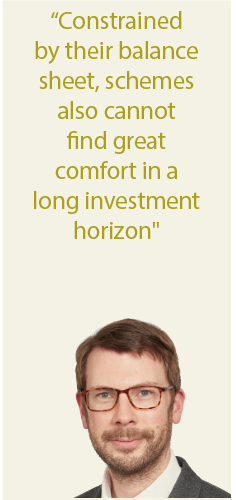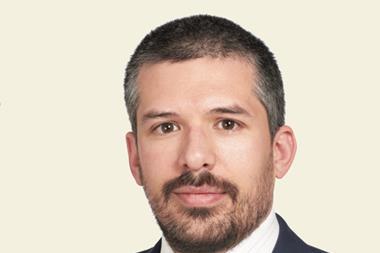The ECB’s move in September 2019 to lower rates and restart corporate bond purchases was a clear red warning signal to defined benefit pension funds and other liability-driven investors.
It indicated structurally lower rates, no immediate prospect of respite on liability valuations through higher rates, and depressed long-term asset price returns in light of sluggish economies.
The COVID-19 pandemic may have prompted a bigger and bolder EU recovery plan than most observers expected, and the issuance of €750bn of high-quality EU debt will doubtless be snapped up by pension funds and insurers happy for the yield pickup these instruments are likely to provide over German Bunds and other government bonds.
But the stress on pension funds is worse than before. Now there are heightened warning signs about the most serious issue for supplementary pension systems in over a generation – the ability of providers and sponsors to meet their long-term obligations.
In Germany, the regulator BaFin has highlighted the precarious state of some Pensionskassen, particularly those continuing to write business with guaranteed yields higher than the maximum prudent discount rate of 0.9%. The days when a 3.25% or 4% annual guarantee was easily affordable in the market are long passed, yet many pension funds still have legacy business at higher guarantee rates than can be prudently financed on their balance sheets.
In Denmark, a review of the labour market pension fund ATP is under way, in recognition that the scheme’s business model needs an overhaul. At root is the sustainability of the guarantees the scheme underwrites. Occupational pension funds, too, are under scrutiny for the robustness of their guaranteed schemes.

In the UK, the aggregate DB scheme funding level dropped below 90% in August, as measured by the Pension Protection Fund’s 7800 index. A debate is also under way about the regulatory underpinning of so-called ‘superfund’ consolidators.
On balance, these market entrants could offer trustees a better covenant than the one they currently enjoy from their existing sponsors at a more affordable price than an insurance buyout.
Yet there are regulatory concerns about the long-term robustness of such consolidator entities, given they will be less well capitalised than an insurer, which is the whole point of their business model from the outset.
The governor of the Bank of England, Andrew Bailey, drew attention in June to the potential risks to financial stability from the superfunds. At the very least, there will be enhanced scrutiny on these entities and their governance, with particular focus on how and when their backers are permitted to take profits.
Most UK DB sponsors closed their schemes long ago to new accrual and then outright. In the Netherlands, the Dutch regulator has sought since the introduction of the new FTK over a decade ago to make the DB promise more conditional, introducing changes at a system level.
That has not worked, pleasing precisely no-one. Older members feel hard done by as they have not received what they thought they were promised; younger people are unable to take as much risk as they should. The funding ratios of the two largest schemes, ABP and PFZW, are currently about 85%.
This level of underfunding means the transition to a DC system in the Netherlands is unlikely to be smooth, given the complexities of transferring DB accrual to individual account balances. As Hans van Meerten writes in this issue, its legality is also questionable.
In Switzerland, the people have twice voted against changes to the pension system. In one referendum, in 2011, necessary changes to the mandatory conversion rate were characterised as an attempt by insurers to cheat the people. A further attempt to reform the system was also overturned in a 2017 referendum. But the changes remain necessary.
The sun is setting on DB and guaranteed pensions but the twilight will be a very long one. Not only are pension funds confronted with low market yields, competing with other similar mature or cashflow-negative pension funds for the same assets only intensifies the downward pressure on those same yields.
In the UK, the BT Pension Scheme, a £50bn behemoth, pays out £2.5bn a year to a growing tally of more than 200,000 pensioners, with a plan to move to a full LDI/bond portfolio by 2034.
Constrained by their balance sheet, schemes also cannot find great comfort in a long investment horizon. The stresses of March 2020 highlighted the market dislocations that can happen in a short period of time.
Although they may not see it, younger members of Dutch pension schemes may be among the best positioned – if they belong to a well designed and governed pension scheme they stand a good chance of doing better than the current system allows. If the system as a whole ends up being well designed they might even think it is fairer than the old one.
They might also wonder how their parents and grandparents ever thought DB pension promises were going to be affordable in the long term.
Liam Kennedy, Editor
liam.kennedy@ipe.com


















No comments yet